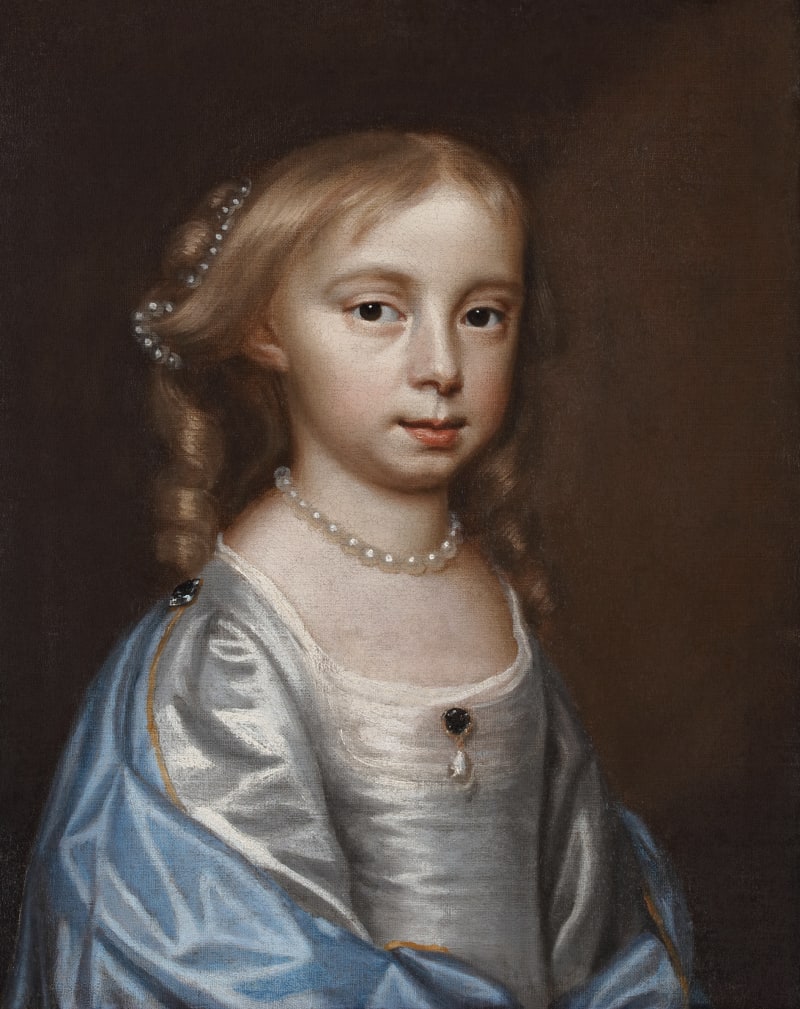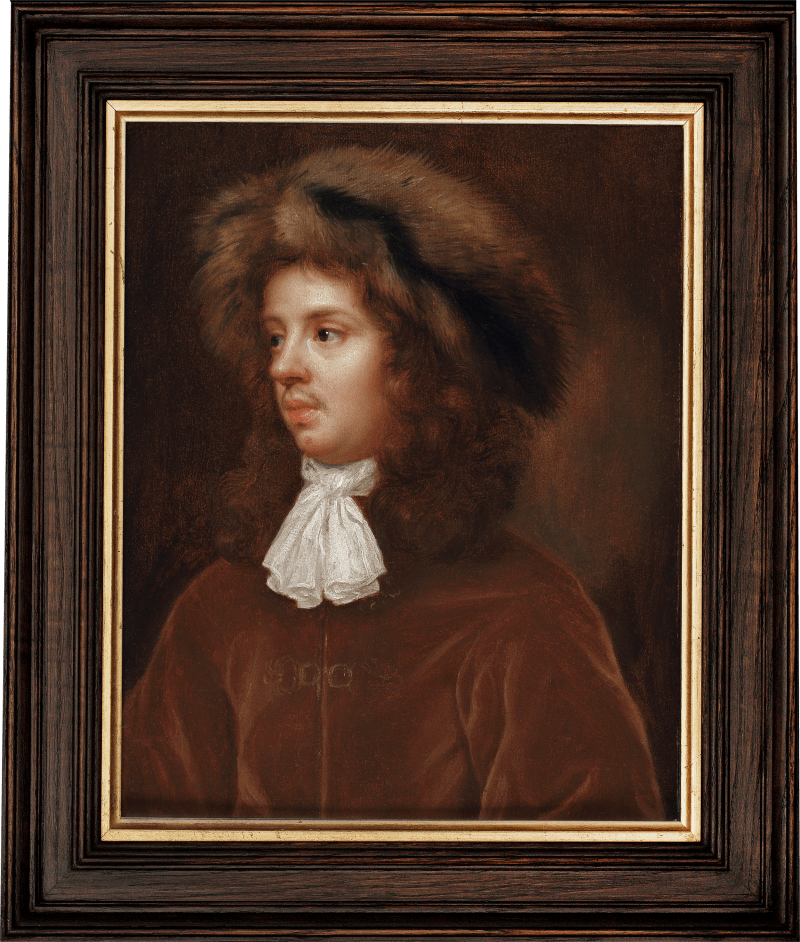In this seminal and earliest recorded self-portrait Mary Beale encapsulates her extraordinary contribution to British art. Compositionally, it is bold and complex. The eyelines are divergent but dominated by Beale’s own direct gaze. Beale accentuates her presence in the composition with her independent stance and through the formalizing deployment of a background sweep of drapery. Her awareness of the importance of self-promotion is evident, as is the deliberate crafting of her artistic reputation. Her pose embraces iconographic signifiers found in male self-portraiture of previous generations, such as the authoritative and inwardly directed hand gesture used by Albrecht Dürer and the stance of Anthony Van Dyck. The Beales owned several works by Van Dyck and Peter Paul Rubens at this date and Beale – her early artistic training unknown – almost certainly studied them.[1] Depicting herself through recognizable tropes, Beale placed herself within a well-established tradition of self-portraiture, thereby influencing and guiding her audience’s perception of her.
This composition also reveals...
In this seminal and earliest recorded self-portrait Mary Beale encapsulates her extraordinary contribution to British art. Compositionally, it is bold and complex. The eyelines are divergent but dominated by Beale’s own direct gaze. Beale accentuates her presence in the composition with her independent stance and through the formalizing deployment of a background sweep of drapery. Her awareness of the importance of self-promotion is evident, as is the deliberate crafting of her artistic reputation. Her pose embraces iconographic signifiers found in male self-portraiture of previous generations, such as the authoritative and inwardly directed hand gesture used by Albrecht Dürer and the stance of Anthony Van Dyck. The Beales owned several works by Van Dyck and Peter Paul Rubens at this date and Beale – her early artistic training unknown – almost certainly studied them.[1] Depicting herself through recognizable tropes, Beale placed herself within a well-established tradition of self-portraiture, thereby influencing and guiding her audience’s perception of her.
This composition also reveals the intricate balance she maintained between her positions as an artist, wife and mother. Seventeenth-century societal expectations of women were restrictive and inextricably linked with their responsibility within the domestic or family setting. Through her self-portrait Beale positions herself as the artistic figurehead of the family, whilst maintaining her image as a respectable, virtuous family woman. It is the earliest known self-portrait to include a husband.[2] Charles, gazes affectionately towards her whilst cradling his son’s hand in his palm and holding his shoulder. This careful combination of familial intimacy with formal dignity offers an image of family harmony and professional status. Depictions of her family became central to Beale’s practice and she continued to paint them throughout her career.
[1] Vertue Note Books, p.174.
[2] Borzello 1998, p.64.










